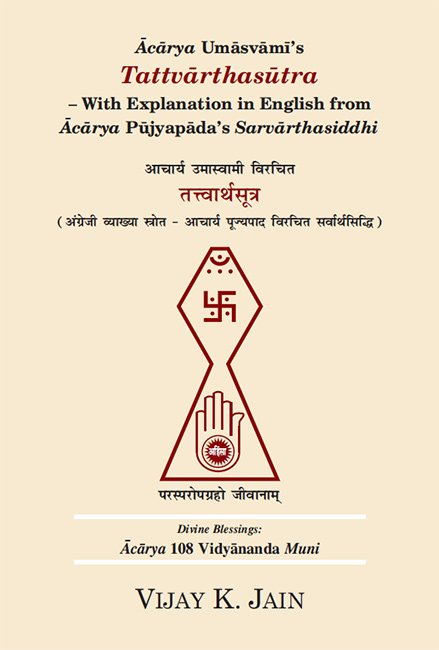Tattvartha Sutra (with commentary)
by Vijay K. Jain | 2018 | 130,587 words | ISBN-10: 8193272625 | ISBN-13: 9788193272626
This page describes definition of adhikarana (substratum) which is verse 6.7 of the English translation of the Tattvartha Sutra which represents the essentials of Jainism and Jain dharma and deals with the basics on Karma, Cosmology, Ethics, Celestial beings and Liberation. The Tattvarthasutra is authorative among both Digambara and Shvetambara. This is verse 7 of the chapter Influx of Karmas and includes an extensive commentary.
Verse 6.7 - Definition of adhikaraṇa (substratum)
Sanskrit text, Unicode transliteration and English translation of Tattvartha sūtra 6.7:
अधिकरणं जीवाजीवाः ॥ ६.७ ॥
adhikaraṇaṃ jīvājīvāḥ || 6.7 ||
The substrata (adhikaraṇa) are in form of living (jīva) and the non-living (ajīva). (7)
Hindi Anvayarth:
अन्वयार्थ: [अधिकरणं] अधिकरण [जीवाजीवाः] जीवद्रव्य और अजीवद्रव्य ऐसे दो भेदरूप है; इसका स्पष्ट अर्थ यह है कि आत्मा में जो कर्मास्रव होता है उसमें दो प्रकार का निमित्त होता है; एक जीव निमित्त और दूसरा अजीव निमित्त।
Anvayartha: [adhikaranam] adhikarana [jivajivah] jivadravya aura ajivadravya aise do bhedarupa hai; isaka spashta artha yaha hai ki atma mem jo karmasrava hota hai usamem do prakara ka nimitta hota hai; eka jiva nimitta aura dusara ajiva nimitta |
Explanation in English from Ācārya Pūjyapāda’s Sarvārthasiddhi:
The word ‘adhikaraṇa’–substratum–has not been explained. The word ‘adhikaraṇa’ and its subdivisions are explained next.
The characteristic attributes of the soul (the living) and the non-soul (the non-living) have been explained already. If so, why are these mentioned again? It is to indicate specifically that these constitute the substrata (adhikaraṇa), and to indicate their special property as substrata (adhikaraṇa). What is it? It is their condition of being the instruments of injury (hiṃsā), and so on. It is contended that the soul (the living) and the non-soul (the non-living) are two, and so the dual, and not the plural, should have been used in the sūtra. But it is not so, for the modes (paryāya) of these constitute the substrata. The substance possessed of specific modes (paryāya) is the substratum, and not mere substance. Hence the plural is used. The soul (the living) and the non-soul (the non-living) are the substrata of what? From the context it means that these are the substrata of influx (āsrava).
